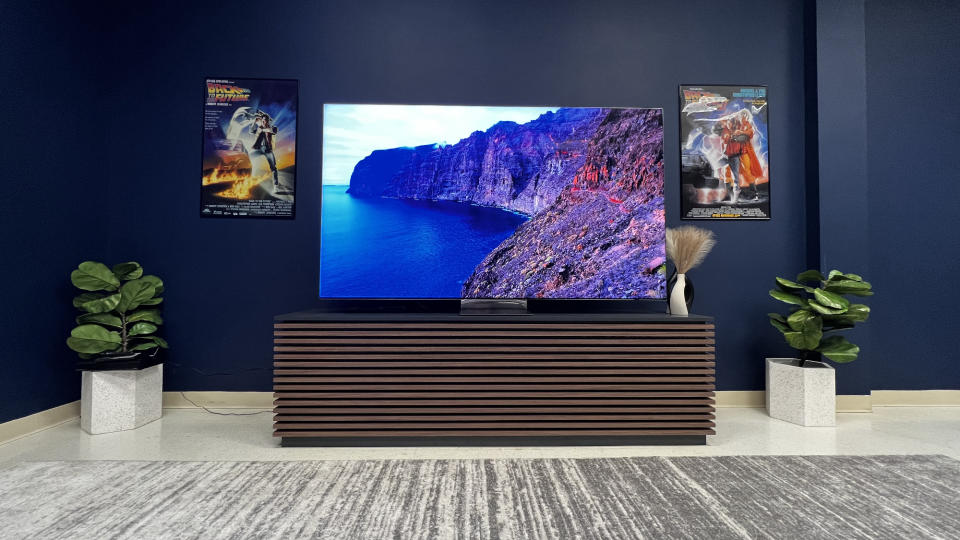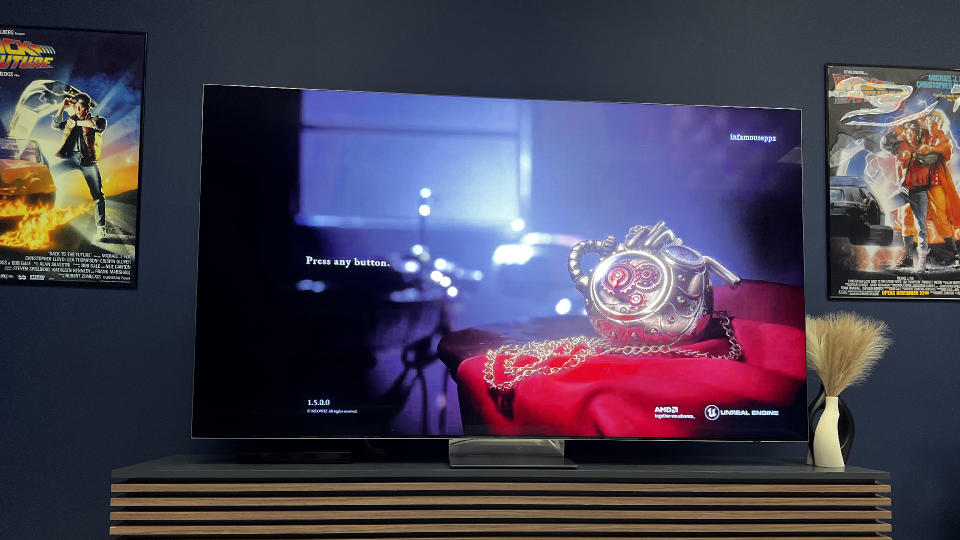The PS5 Pro could get me to buy a Samsung 8K TV — here's why
When you buy through links on our articles, Future and its syndication partners may earn a commission.

The internet was abuzz the past few weeks in the wake of PS5 Pro leaks spreading like wildfire. There’s a lot riding on Sony’s updated console, worth four years of ever-building excitement, and all eyes are set on its performance capabilities.
One of these rumored capabilities has me already picking out my next display among the best 8K TVs. Sure, this concept of 8K gaming has evolved into a meme at this point, as Sony did advertise it on the boxes of newly released PS5 systems —before removing the 8K tag in January 2024.
Still, the more recent PS5 Pro rumors pointing to a monster 8K gaming console makes me hyped to try it with the Samsung QN900D 8K QLED TV. You might be thinking that its $2,499 price isn't cheap, but the potential future proofing and underlying specs make it a worthy pairing for the PS5 Pro.
Of course, none of the rumors surrounding the PS5 Pro are fact, so don’t get too excited until Sony itself makes an official announcement. Given how still early 8K gaming is, the Samsung QN900D has some interesting tricks up its sleeve that give it extra legs in the market for those hotly anticipating the PS5 Pro.
Who needs 4K, anyway?

Recent reports suggest the PS5 Pro might be capable of supporting in-game resolutions up to 8K, which came to light via a leaked spec sheet
Recent reports suggest the PS5 Pro might be capable of supporting in-game resolutions up to 8K, which came to light via a leaked spec sheet featuring an AI Accelerator in tandem with a custom machine learning architecture. The best consoles can do right now in terms of gaming is 4K resolution at 120Hz, which could potentially make 8K at 60Hz a viability for the system.
This is why many players tend to appreciate the best gaming PCs over modern consoles, as they offer a far wider berth in resolution and refresh rate support. I, for one, like the buttery smooth gameplay afforded via higher frames (and, hence, higher refresh rates) over better image quality (or a higher resolution, in this case).
This is also why on most modern PS5 games you can choose to play either in performance or quality mode, which allow you to sacrifice better graphics for higher frames per second or vice versa. The PS5 Pro could have a similar functionality, one that works in tandem with the refresh rate and HDMI VRR/ALLM functionalities to allow you to game either in 8K/60Hz or 4K/120Hz (and even further, 1080p/240Hz for those who might want it).
That’s all assuming, of course, that the PS5 Pro will even have support for 8K gaming. Herein lies the biggest hurdle for the new console to overcome, as many believe releasing a PS5 Pro would be a bad idea — but maybe the Samsung QN900D can quell those fears.
The pitfalls of early adoption

Samsung’s QN900D is marked as the perfect pairing for the PS5 Pro due in large part to its already existing AI upscaling potential. In my own Samsung QN900D hands-on demo I got to experience cloud games played via Xbox Game Pass, which were then upscaled to 8K and looked utterly gorgeous on the display.
In the hands of the Samsung QN900D, the PS5 Pro could potentially do even more than game in 8K. While 8K gaming has plenty of gamers ecstatic about the potential fidelity presented at this resolution, what I’d love to see more is Sony draw out that raw power of the PS5 Pro so it could hit 4K at 240Hz, which the QN900D supports.
Think about it, while gaming in 8K might sound like the future, there’s no doubt it will run quite poorly. Add to that the fact that even some of the best computers in the market — even those using RTX 4090 GPUs — struggle running games in 8K and there’s little chance Sony’s next console could gain such support or play games at an optimal frame rate in that resolution.
That’s why higher frames is always the go-to over graphics. There’s little fun in experiencing newer releases at suboptimal frame rates, case in point being Dragon’s Dogma 2, which launched earlier this year on PS5 and Xbox Series X at a capped 30fps. Compared to some of the best TVs in the space, the QN900D has a low input latency of 10.4ms, which makes it even more ideal for such fast-paced gaming.
But one major flaw wrestling in the shadows behind the PS5 Pro is that it could, just like its predecessor, still lack Dolby Vision support. This HDR format is arguably one of the best and one that would radically improve upon the performance of 8K gaming on PS5 Pro.
Buttery smooth console gaming
Unfortunately, we’re not quite there yet when it comes to 8K gaming. While I do think it would be an unforgettable experience, I don’t think I’d be willing to sacrifice frame rates for 8K resolution — even if it were 8K at 60Hz. But, what I would love to see is a wider refresh rate support, especially in the face of a burgeoning market for 144Hz TVs (and ever-expansive monitors, like the forthcoming 480Hz OLED model via LG).
Displays like the 2024 QM8 Mini-LED TV can run games at 1080p in 240Hz via VRR, which could be the next step for consoles to explore when it comes to 8K resolution.
Thus, if you’re a gamer and you’re wondering if your next TV needs 144Hz, the answer is yes. Some of the best TVs are now equipped with support for the refresh rate range, while others are testing new boundaries like TCL and its Game Accelerator feature. Displays like the 2024 QM8 Mini-LED TV can run games at 1080p in 240Hz via VRR, which could be the next step for consoles to explore when it comes to 8K resolution.
Luckily, the Samsung QN900D offers a solid solution to the problem, but the PS5 Pro still isn’t without some potential pitfalls. Improved internals that can allow it to support gaming at 240Hz (or, hopefully, even higher refresh rates) along with Dolby Vision would allow the PS5 Pro to stand tall in the lineup of storied Sony consoles.
